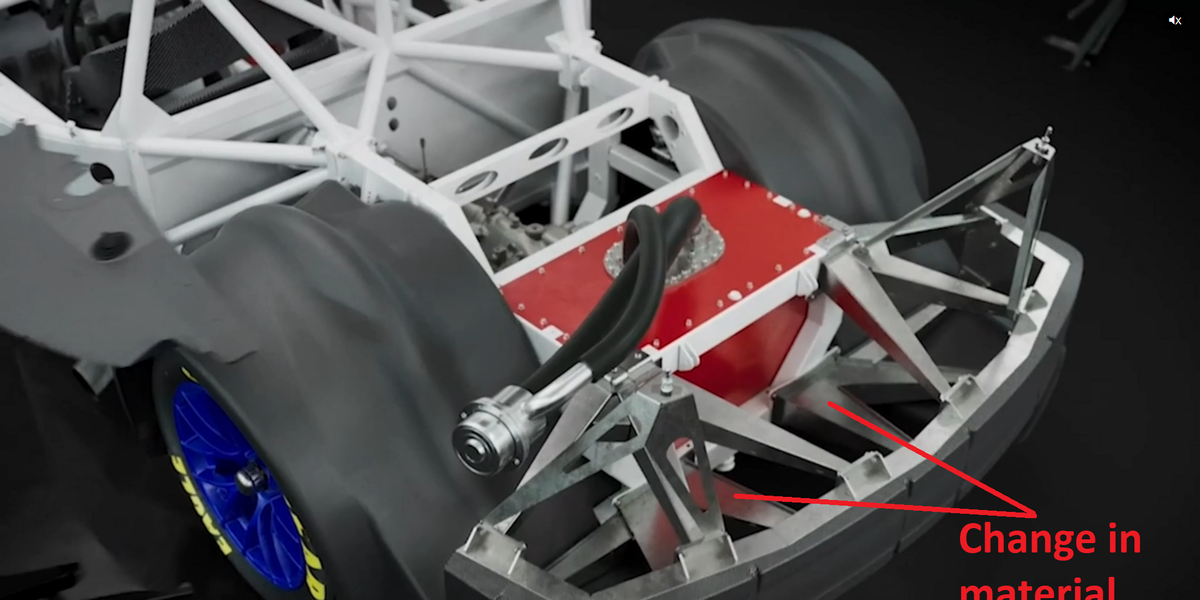NASCAR making changes. NASCAR will foot the bill. Finger pointing. Accusations flying. Personal dignity insulted. Mud flung.
Do I have it all down?
Do I have it all down?
I believe the outrage expressed is that it's taken basically 8 months for them to even acknowledge the car MIGHT be too stiff. Some of the experts here suggested that before the first race. <might be some sarcasm here>Did you miss the crash test they just finished and the subsequent actions they took to soften up the rear end impacts? I'm sure you and others are well aware that this test wasn't the first nor will it be the last so you all will have more opportunities to do your I told you so routines? So cheer up the circus continues.
LOVE LOVE LOVE this article. Never heard of the trigger deal. Typed much longer reply but it would just get ridiculed by the regulars. So I deleted 90% of the drivel. Whatever.Quite a bit more detail on rear clip and back of center section changes here.
I wonder if it’s possible to discuss them without reminding ourselves who’s to blame in every second sentence?

Leaked Memo Shows Changes NASCAR Is Making to Fix Next Gen Race Car Safety Concerns
The safety of the Next Gen chassis has been a hot topic recently.www.roadandtrack.com

It's a shame NASCAR can't trust the teams to do these mods themselves. Be a ton faster. I'm sure they have the phone # of previous employees that could handle it.All of these changes combined focus on introducing more things that can crumple and absorb energy between the rear of the car and the driver compartment. This should result in an increase in safety, and less force on the driver during a rear-end impact. The introduction of this update plan for 2023 signals that drivers were likely pleased with what NASCAR showed them from simulations done on these parts during their meeting last weekend.
It is apparent that safety is the primary focus of this update because the changes will likely result in some increased costs going forward. While NASCAR will pay for the initial updates, the parts will likely see a shorter lifespan in the future because of the reduced structure. The parts will have to be refurbished more often to bring them back into spec after smaller incidents. In addition to the refurbishment costs, the other concern with the changes will be how well the chassis pieces keep in compliance over multiple races, as components are more likely to bend now with less support. This could result in them falling out of specification for inspection requirements sooner and requiring more frequent visits back to be refurbished.
Those concerns are minor compared to the possible safety benefits. It also shows that NASCAR and team owners are willing to invest in a solution that can be deployed quickly in order to improve safety for drivers, even if there is a cost for everyone going forward.
Teams will have to strip down all their current cars to the bare chassis that they wish to use for the 2023 season and will send them to the vendor for refurbishment. This means that the shops and Technique chassis will be busy over the winter as they update hundreds of rear clips and center sections.
NASCAR did not immediately respond to our request for comment.
Who in Nascar has said anything about not trusting teams? It says that the Revs will be done in the off season. precisely, in jigs, according to plans and specs by the OEM.It's a shame NASCAR can't trust the teams to do these mods themselves. Be a ton faster. I'm sure they have the phone # of previous employees that could handle it.
The parts are being shipped back to the "one source provider"? Why NOT allow the teams to modify them? Cause teams can't be trusted to build a better mousetrap? Take less than week for Hendrick to be ready to do ALL the GM stuff. Same for Penske/Ford. Gibbs/Toyota. If you wanted to separate them into manufactures. Then let teams randomly choose their subassemblies. They all interchange, right? Make it like a trip to the mall. But nothing is marked as to who built it. Hendrick isn't gonna build a part to advantage a Ford or Yota team. Amiright or delusional? Wait...don't answer that you big old meanie.Who in Nascar has said anything about not trusting teams? It says that the Revs will be done in the off season. precisely, in jigs, according to plans and specs by the OEM.
Hadn't thought of idea in first sentence. Just seems like a ton of stuff to get pushed thru in next 3 months. Maybe not.I would bet money that Technique has upgrades, revisions and any other developments written into the supply contract as their work.
And they have a bunch of jigs, robotic / programmable welders, a now experienced crew and everything else they need to make this plan work on schedule.
Rodney Childers et al can continue to try to tweak for 3 pounds of downforce without getting caught.
Trust and professional auto racing teams in the same sentence. LOL
I posted the reasons above. That's a Technique chassis.The parts are being shipped back to the "one source provider"? Why NOT allow the teams to modify them? Cause teams can't be trusted to build a better mousetrap? Take less than week for Hendrick to be ready to do ALL the GM stuff. Same for Penske/Ford. Gibbs/Toyota. If you wanted to separate them into manufactures. Then let teams randomly choose their subassemblies. They all interchange, right? Make it like a trip to the mall. But nothing is marked as to who built it. Hendrick isn't gonna build a part to advantage a Ford or Yota team. Amiright or delusional? Wait...don't answer that you big old meanie.
If you needed to know they would tell you.
